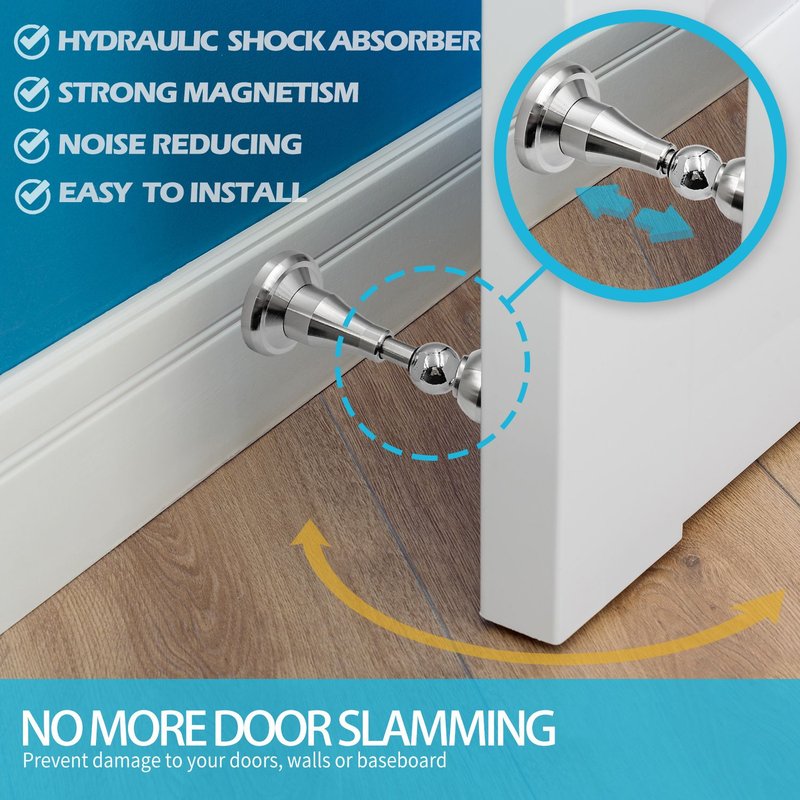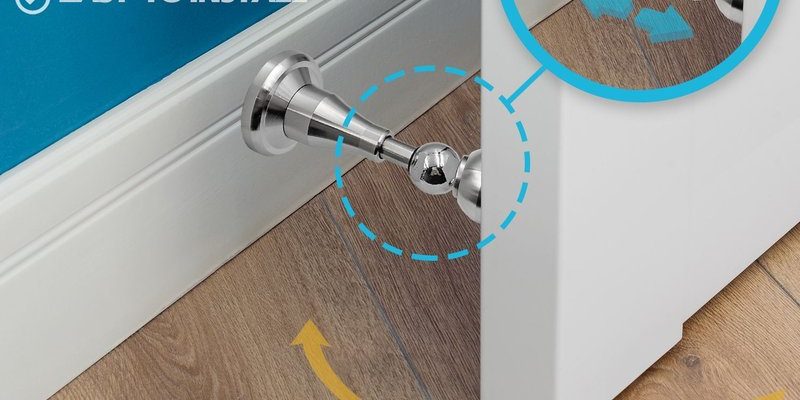
Imagine walking into your home after a long day, arms full of bags, only to have the door swing closed on you. It’s like your door has a mind of its own! A magnetic door stop, like the one from Hickory Hardware, uses magnets to hold the door open securely. Installing one isn’t as tricky as it sounds, and once you get the hang of it, you’ll wonder how you ever lived without it.
What You’ll Need for Installation
Before diving into the installation, let’s gather everything you’ll need. Here’s a handy list so you can hit the ground running:
- Magnetic door stop kit: This includes the magnetic catch and the base plate.
- Drill: A cordless drill works best for this job.
- Screwdriver: You’ll need it to secure the components.
- Measuring tape: Accurate measurements are key to a successful installation.
- Level: To ensure everything is straight.
- Pencil: For marking where to drill.
Gathering these items ahead of time makes the process smoother. Trust me, the last thing you want is to be scrambling for a screwdriver halfway through!
Choosing the Right Location for the Magnetic Door Stop
Now that you’ve got your tools, the next step is determining where to install the magnetic door stop. You want to choose a spot where the door will stay open when you need it to, but also one that won’t get in the way when closed.
Start by deciding how far you want the door to open. Generally, around 90 degrees is ideal. Use your measuring tape to mark this on the wall, roughly at the same height as the door handle. This way, when the door swings open, it’ll meet the magnetic catch without any issues.
You might be wondering, “Why do I need a level?” Well, it’s easy for things to look straight at a glance but can be off just enough to create problems later. Make sure your marks are perfectly level so your door stop operates smoothly.
Installing the Magnetic Catch on the Door
Now, let’s get into the meaty part: installing the magnetic catch on the door. First, position the catch right over the pencil mark you made earlier. Use your level to ensure it’s straight. Once you’re happy with the positioning, mark the screw holes with your pencil.
Next, it’s time to drill. Depending on your door material, you might use different drill bits. If your door is wood, a wood drill bit is perfect. For metal doors, you’ll need a metal drill bit. Drill the holes where you marked, then place the catch over them and secure it with screws using your screwdriver. It’s as simple as that!
Attaching the Base Plate to the Wall
Once the catch is installed, we move to the base plate on the wall. This part is just as important, as it’s what the door will stick to when it swings open. Place the base plate directly in line with the magnetic catch. Again, use your level to make sure it’s straight.
Mark the screw holes just like you did with the catch. After drilling, attach the base plate to the wall with screws. Here’s a little tip: if you’re drilling into drywall, you might need wall anchors to ensure a secure hold. This step will ensure the plate won’t pull away when your door meets it.
Testing Your Magnetic Door Stop
With both parts installed, it’s time to test out your handiwork! Gently swing the door open until you feel it catch on the magnetic base plate. It should hold the door open securely without any jittering or slack. If it doesn’t hold well, check the alignment. Sometimes a tiny adjustment can make a big difference.
If everything looks good, give it a few practice swings to make sure it works consistently. This is a great moment to pat yourself on the back—you just installed a magnetic door stop!
Troubleshooting Common Issues
After installation, you may run into a few hiccups. Here are some common issues and how to fix them:
- Alignment Problems: If the door doesn’t catch properly, check whether the magnetic catch and base plate are aligned. A slight shift can solve the problem.
- Weak Magnet: If your magnet isn’t strong enough to hold the door, it might be an issue with the quality of the kit. Consider replacing it or checking for any obstructions.
- Door Movement: If your door swings back too easily, ensure the screws are tight and that the door fits snugly within the frame.
These troubleshooting tips should help you address common problems quickly and effectively.
Alternative Options for Magnetic Door Stops
While the Hickory Hardware magnetic door stop is a solid choice, there are other types to consider. For example:
– Universal Magnetic Door Stops: These can fit most doors and are great if you want flexibility.
– Spring-Loaded Stops: These are less subtle but can be more effective in high-traffic areas.
– Floor-Mounted Stops: If you prefer not to drill into your walls or door, these can be a good option.
Each type has its own set of pros and cons, so think about your needs before making a decision. A little research can go a long way in finding the right fit.
Installing a magnetic door stop is a straightforward project that can save you from countless frustrations. With just a few tools and a little patience, you can enhance your home’s functionality. Remember, whether you’re holding the door open for friends or just enjoying a fresh breeze, a well-placed magnetic door stop can be your best ally. Happy installing!
